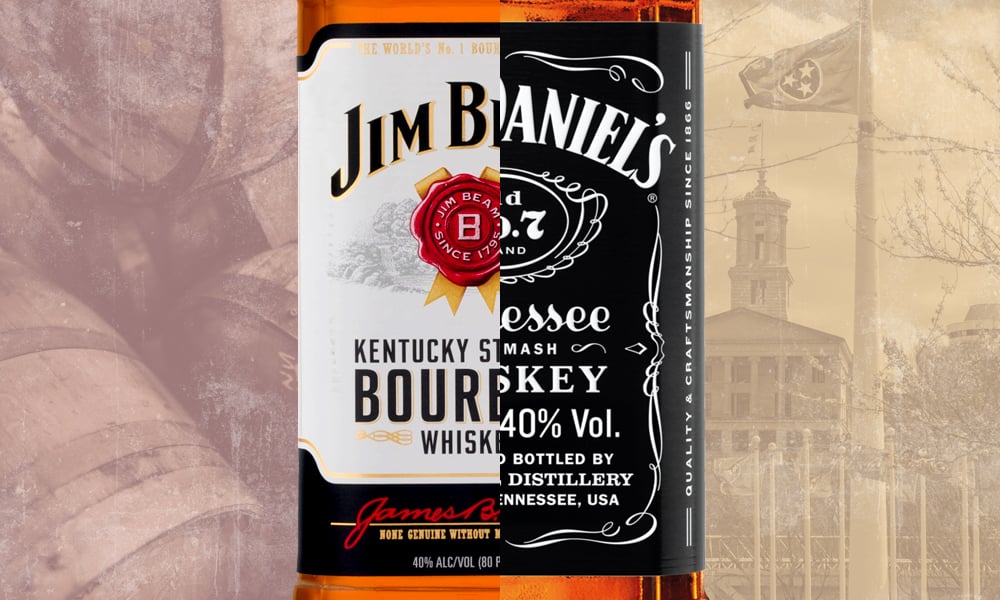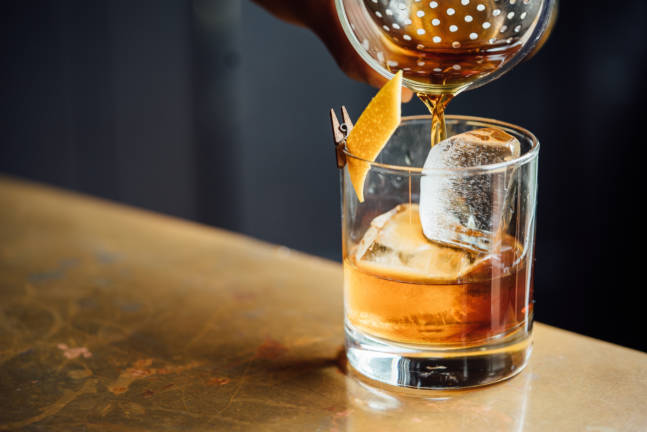If we didn’t need water to survive and coffee to function, it’s a fair bet we’d be consuming what we consider America’s favorite drink–bourbon–all day long. That’s obviously not sustainable, but we can all dream, right? What is bourbon? Why is it so delicious? How’s it made? What’s the difference between bourbon and whiskey? Why do we all love it so much? We’re going to try to clear all of that up for you right here.
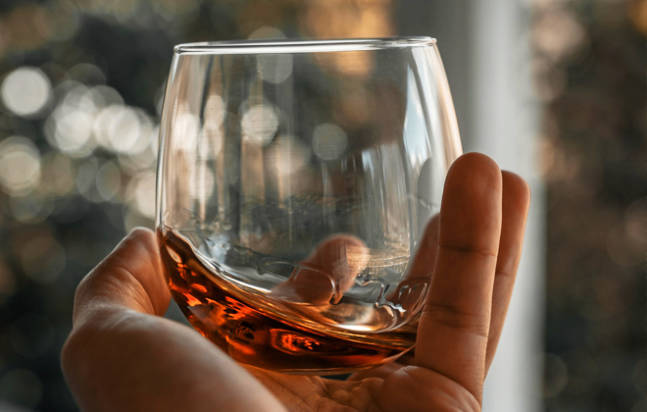
What Is Bourbon?
According to Wikipedia, Bourbon “is a type of American whiskey, a barrel-aged distilled liquor made primarily from corn.” This is certainly true, but it doesn’t really delve into the nuance that makes bourbon, well, bourbon. In order to fully understand how to make bourbon, you have to take a step back and examine what is whiskey made of in the first place. Making any whisk(e)y requires only four things–water, grain, yeast and a barrel to age it in. Those four simple components coupled with some chemistry, artistry and an incredible amount of patience will lead to the creation of whiskey.
What’s the Difference Between Bourbon and Whiskey?
All bourbon is whiskey, but not all whiskey is bourbon. We love Scotch. We love American whiskey. We love Irish whiskey, Japanese whisky, Indian whisky and all manner of dark, distilled spirits whether they choose to spell their name with an “e” or not. But bourbon will always be our first love and, according to the US government and a whole bunch of laws, there are very specific rules that need to be followed in order for a spirit to be called bourbon.
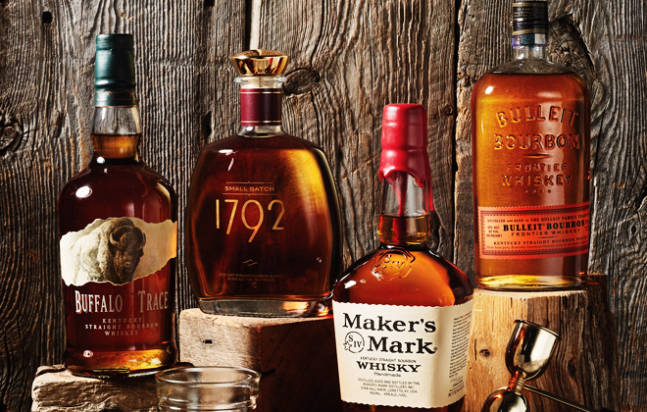
Bourbon vs. Whiskey
The ABC’s–or rather ABCDEFG’s–of bourbon makes it incredibly easy to remember everything required for the product you’re creating to legally be called a bourbon according to the U.S. government. [Don’t get us started on the “is Jack Daniels bourbon” argument.]
A – American-made. Bourbon has to be made in America. (Despite the fact most of it–arguably the best of it–comes from Kentucky, it can be made anywhere in the USA.)
B – Barrels used to age the bourbon must be new charred oak.
C – Corn has to be the primary component of the mashbill with at least 51%.
D – Distillation proof of the spirit must not exceed 160 or 80% abv (alcohol by volume).
E – Entry proof of the spirit going into the barrel must not exceed 125 or 62.5% abv.
F – Fill proof of the spirit going into the bottle must exceed 80 or 40% abv.
G – Genuine, as in it has to be pure with no additives, flavorings or colorings.
[Charcoal filtration and the Lincoln County Process used to create Tennessee whiskeys do not violate any of those rules which is why the Jack Daniels argument will continue until people stop drinking whiskey all together.]
Once the spirit in question jumps through all those hoops, it can legally be called bourbon. Contrary to popular belief, it can contain multiple recipes/mash bills, and there is absolutely no age requirement.
What About All Those Other Bourbon Descriptions on the Label?
We’re glad you asked! Again, as long as the spirit follows the ABCDEFG guide we outlined above, it’s technically and legally bourbon. But there are a lot of other things you might see on labels that can be confusing.
Straight Bourbon Whiskey – In order to be labeled as such, it has to be aged for at least two years. If it’s aged for less than four years, an age statement has to appear on the label.
Kentucky Straight Bourbon – Same requirements as above, but it has to have been distilled in and aged for at least one year in Kentucky.
Bottled-In-Bond – After “rectifiers” messed up the general population with additives and fake whiskey, Uncle Sam stepped in with one of the first consumer protection laws, the Bottled-in-Bond act, that mandated a minimum of four years aging at exactly 100 proof in one season by a single distiller before being aged in a government bonded warehouse.
Barrel Proof / Cask Strength / Barrel Strength Bourbon – These are all interchangeable descriptions that generally refer to bourbon that has not been watered down between leaving the barrel and entering the bottle.
Single Barrel – The name is pretty self-explanatory on this one. But this is also the way most Store Pick / House Pick bottles are done.
[On that note, check with your favorite local watering hole and see if they have any Store / House Picks available for sale. You’d be shocked how many great bottles come from Mom and Pop / local establishments that know how to pick barrels and have the benefit of selling their picks to the public.]
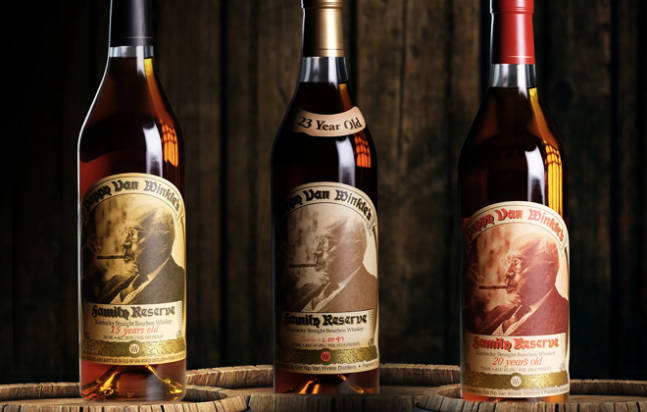
What About the Age Statement?
Bourbon gets its flavor and color from the barrel it’s aged in, so naturally, the longer it ages the better… right? Not necessarily. All whiskey is made with the heritage and pedigree that established what we consider the best alcohol brands of today, but the climate of Kentucky is very different of that of Scotland. 40-year-old Scotch made with decades of relatively minimal temperature changes? Sign us up. 40-year-old Bourbon with the way Kentucky temperatures fluctuate? Yeah, we’re still gonna drink it but we’re probably not going to like it as much as the Scotch.
Yes, the age statement absolutely makes a difference, but there’s a limit. Having tried all the Pappiez, Wellers, and a couple different bottles of Overholt Rye more than twice as old as I am from the Mellon Estate sale, I can tell you definitively that older isn’t necessarily better. It’s all about flavor profile and respective value. Do you want a bottle of Pappy Van Winkle 23 to display on your bar cart, laud over your friends, and probably never open? Sure. Should you buy that over Pappy 15? Absolutely not. The 15 isn’t over-oaked, is a much smoother pour, far more drinkable (for better or worse), and infinitely more accessible–and I’m not just saying that because we’re giving away a bottle of Pappy 15 here.
Want to read more about the best bourbon whiskey? Click here for Cool Material’s Guide to Bourbon.


